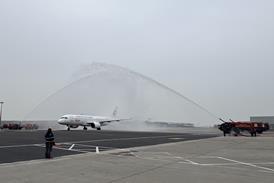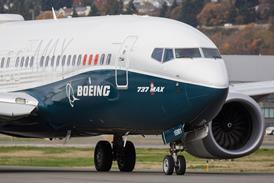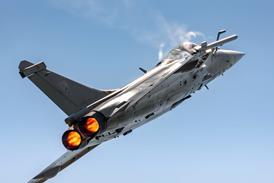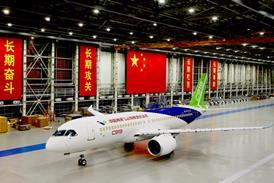Aircraft will eventually become totally independent of ground-based aids and services as an essential part of increasing air traffic management capacity, but there is still some way to go before they get there. The issue of how to overcome the obstacles still in the way of achieving this objective was the dominant theme at the 5-6 March Avionics 08 conference in Amsterdam and the ATM 2008 conference in the same city.
Speaking at Avionics 08, Hugues Subra de Salafa, Airbus' head of ATM engineering, said the cockpit systems of the future will make commercial aircraft independent of ground-based aids, and capable of precision flight path management to achieve the most cost-efficient trajectory in four dimensions (4D - the fourth dimension is time).
Subra said it is essential, if the ATM system is to work properly, that each aircraft gets more up-to-date - therefore more accurate - upper wind data that can be uplinked to its flight management system. Also, he said, the FMS algorithms and meteorological models for processing the data have to be improved. According to Subra, RTAs (required times of arrival) currently can still only be accurate to a matter of 1-2min, but if efficient aircraft sequencing is to be achieved they are going to have to improve to within a few seconds.
Dharmesh Patel, Honeywell product and marketing manager, agrees with Subra. FMS will have to be able to downlink a requested business trajectory, he said, adding that the computer can also have the requirements for automatic sequencing and spacing programmed into it. If constraints are such that the predicted 4D trajectory cannot be met, the new trajectory or RTAs can be notified to the pilots and downlinked to all the network participants who need to know.
Meanwhile, it is clear that RBTs (reference business trajectories) are not what the average aircraft is flying today. Lars Lindbergh, president of Avtech, explained how his company analyses data from aircraft quick access recorders to determine exactly what gate-to-gate trajectories specific airlines' aircraft fly now, with a view to working with the carrier, the airport and the national aviation authority to approve an ideal trajectory. The trajectories on offer are ideal not only from the business point of view, but in the process can tailor departures and final approaches so that their shorter flight paths have lower noise footprints and pass over less densely populated areas. Avtech has been working widely with approach and departure procedure design specialists Naverus to deliver the best possible trajectories using required navigation performance (RNP) technologies to airlines like Qantas, SAS and Southwest Airlines. Inefficient approaches at Frankfurt, Germany, Avtech has found, results in the production of 460,000t of CO2 unnecessarily because of inefficient stepped approaches starting descent up to 740km (400nm) out, when ideally continuous descent approaches could be applied from 185km out.
Speaking at Avionics 08, Naverus' vice-president flight operations Hal Andersen talked of delivering "NowGen", saying airlines do not have to wait for the US Federal Aviation Administration's "NextGen" future ATM system. The same is applicable to the Single European Sky ATM programme SESAR. Many of their objectives can be achieved today, he said, and a number of airlines are doing it.
Very much on Andersen's wavelength - and in the process addressing Subra's concerns about wind-forecasting inaccuracies - Lindbergh pointed out that AVTECH already offers a keener forecasting service that it calls "NowCast", which is delivering runway RTAs to an accuracy of 3.6s an hour ahead of landing.
Lindbergh said that if SESAR is to meet its objective of tripling the system's total traffic capacity while improving the environment and maintaining or improving safety, it has no choice but to embrace all the means available to it.
Source: Flight International























